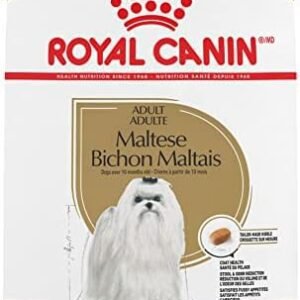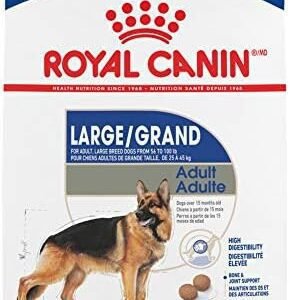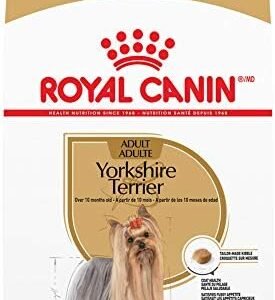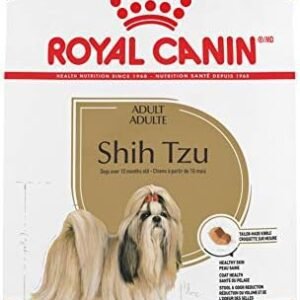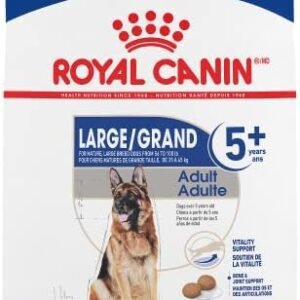Introduction
Are raspberries just as delightful for your four-legged friend as they are for you? These small, vibrant berries are packed with flavor and nutrients, making them a beloved snack for many. But when it comes to sharing your snacks with your furry companion, you might wonder: Can dogs eat raspberries?
The world of canine nutrition is a complex one, and while dogs have their primary diets specially formulated to meet their nutritional needs, it’s not uncommon for them to sneak a taste of human food. Some human foods are safe for dogs, while others can pose health risks. In this article, we will explore whether raspberries are a healthy and safe treat for dogs. We’ll dive into the pros and cons of feeding raspberries to your canine companion, provide guidance on appropriate serving sizes, and discuss potential risks and benefits. So, let’s find out if your dog can enjoy the sweet tang of raspberries or if they should avoid them altogether.

Table of Contents
Can Dogs Eat Raspberries? Unveiling the Truth
As a dog owner, you’ve likely witnessed the excitement in your furry friend’s eyes when you grab a handful of raspberries to enjoy. Those tiny, juicy fruits are not only a delicious treat for humans but also offer a spectrum of flavors and health benefits. But can your beloved canine companion indulge in the same delightful experience? In this section, we will explore whether dogs can safely consume raspberries.
The Safety of Raspberries for Dogs
Raspberries are generally safe for dogs when provided in moderation. They are non-toxic and don’t contain any specific components that pose an immediate danger to your pet. In fact, some dogs enjoy the sweet and slightly tangy taste of raspberries. This enjoyment often leads dog owners to ponder whether it’s a viable option for a healthy treat.
Nutritional aspects of raspberries
Let’s examine the nutritional aspects of raspberries to understand why they can be a favorable addition to your dog’s diet. Below is a table highlighting the nutrition found in raspberries:
| Nutrient | Amount per 100g |
|---|---|
| Calories | 52 |
| Carbohydrates | 11.94g |
| Dietary Fiber | 6.5g |
| Sugars | 4.42g |
| Protein | 1.48g |
| Vitamins and Minerals | |
| Vitamin C | 26.2mg (44% DV) |
| Vitamin K | 7.8µg (10% DV) |
| Folate | 21µg (5% DV) |
| Vitamin A | 33 IU (1% DV) |
| Vitamin E | 0.87mg (4% DV) |
| Potassium | 151mg (4% DV) |
| Magnesium | 22mg (6% DV) |
| Iron | 0.69mg (4% DV) |
| Calcium | 25mg (2% DV) |
As seen in the table, raspberries are rich in dietary fiber, vitamins, and minerals. Vitamin C, in particular, is present in substantial amounts, contributing to the antioxidant properties of raspberries. These antioxidants can help neutralize harmful free radicals and reduce oxidative stress, promoting overall health. Additionally, the dietary fiber in raspberries aids in digestion and can help regulate your dog’s bowel movements.
While raspberries offer nutritional benefits, it’s essential to acknowledge potential drawbacks:
Raspberry Drawbacks for Dogs
Sugar Content: Raspberries contain natural sugars, primarily in the form of fructose. Excessive sugar intake can lead to weight gain and dental issues in dogs, just as it can in humans. Therefore, it’s crucial to control the quantity of raspberries your dog consumes.
Caloric Content: While raspberries are relatively low in calories, overindulgence can contribute to excess calorie intake, which may lead to obesity. It’s vital to ensure that raspberry treats don’t comprise more than a small fraction of your dog’s daily calorie intake.
Portion Size: Some dogs may have trouble digesting a large number of raspberries, leading to gastrointestinal distress such as diarrhea. Start by offering a small piece and observe how your dog reacts. If there are no adverse effects, you can gradually increase the portion size.
- Allergies: Although uncommon, some dogs may be allergic to raspberries. Watch out for signs of food allergies, which can include itching, hives, swelling, vomiting, or diarrhea. If your dog displays any of these symptoms after consuming raspberries, consult your veterinarian.
In conclusion, while raspberries offer nutritional benefits and are generally safe for dogs, it’s essential to provide them in moderation. Remember that raspberries should complement your dog’s primary diet and not replace it. By being cautious about portion sizes and monitoring your dog’s reaction, you can ensure that they enjoy this tasty treat without any health risks.
Serving Raspberries to Your Dog: Size Matters
As we’ve established that raspberries are indeed a treat your dog can enjoy, the next crucial question arises: How much raspberry can your dog eat, and how should you serve it? In this section, we will explore the essential factors that revolve around portion control and preparation.
1. Emphasize Moderation
When feeding your dog raspberries, moderation should be your guiding principle. As nutritious as raspberries are, they are not intended to replace a significant portion of your dog’s regular diet. Treats, including raspberries, should account for no more than 10% of your dog’s daily calorie intake. This ensures that your dog maintains a balanced and well-rounded diet.
It’s important to remember that your dog’s daily caloric needs can vary based on their size, age, activity level, and other individual factors. Consult with your veterinarian to determine the appropriate number of calories for your dog’s specific needs.
2. Start Small and Observe
As with any new food introduced into your dog’s diet, it’s a good practice to start with a small portion of raspberry. This allows you to observe how your dog reacts to this new treat. While many dogs may have no adverse effects, some may experience digestive distress if they consume large quantities of raspberries too quickly.
Your initial offering should be a single raspberry or a portion equivalent to a small slice of the fruit. Wait to see how your dog responds. If there are no issues, you can gradually increase the portion size. Remember that each dog is unique, and their tolerance for raspberries may differ.
3. Preparing Raspberries for Your Dog
Preparing raspberries for your dog is a straightforward process. These berries can be served to your pet without any complicated procedures. However, it’s important to take a few steps to ensure the raspberries are safe and easy for your dog to consume:
a. Wash the Raspberries: Rinse the raspberries thoroughly with clean water before offering them to your dog. This step is essential to remove any potential contaminants or residues from the fruit’s surface.
b. Avoid Additional Ingredients: Serve raspberries in their natural state, without adding any sweeteners, sugar, or other ingredients. Adding sugar or other toppings can negate the health benefits of raspberries and may be harmful to your dog.
c. Consider Mashing: Some dog owners prefer to mash raspberries before offering them to their pets. This can be especially helpful for small dog breeds or puppies, making it easier for them to consume. Mashed raspberries can also be mixed into your dog’s regular food for added flavor.
4. Portion Sizes Based on Dog’s Weight
The appropriate serving size of raspberries for your dog should be determined by their weight. Here’s a general guideline to help you serve the right amount:
Small Dog Breeds (up to 20 pounds): Begin with 1-2 raspberries and gradually increase as your dog tolerates.
Medium Dog Breeds (21 to 50 pounds): Start with 2-4 raspberries and adjust as needed.
Large Dog Breeds (over 50 pounds): You can offer up to 5-10 raspberries, depending on your dog’s reaction.
Again, it’s crucial to monitor your dog’s response to the raspberries. If your dog experiences any digestive upset, such as diarrhea or vomiting, you should reduce the portion size or discontinue serving raspberries altogether.
It’s important to note that the size and breed of your dog may affect how much raspberry they can tolerate. Larger dogs may be able to eat more raspberries without adverse effects, but the key is to ensure that the quantity remains within the recommended 10% of their daily caloric intake.
In conclusion, serving raspberries to your dog should be done with care, considering your dog’s size, weight, and individual tolerance. As a loving dog owner, your priority is to provide a safe and enjoyable treat while maintaining your pet’s overall well-being.
Assessing the Risks: Could Raspberries Pose a Threat to Your Dog?
In the previous sections, we’ve explored the many benefits of raspberries for dogs and the importance of moderation in serving this delicious fruit. However, it’s essential to consider the potential risks and drawbacks associated with feeding raspberries to your furry friend. In this section, we’ll delve into these critical aspects to help you make an informed decision about offering raspberries to your dog.
1. Food Allergies in Dogs
Just like humans, dogs can have food allergies, and raspberries, while generally safe, can be a source of allergic reactions for some dogs. Allergies are individualistic, and it’s impossible to predict whether your dog will develop an allergic response to raspberries. Nevertheless, it’s crucial to be vigilant and watch for signs of allergies when introducing this fruit into your dog’s diet.
2. Short-Term Signs of Food Intolerance
Food intolerance refers to the difficulty in digesting certain foods, which can lead to gastrointestinal distress. While raspberries are relatively gentle on the stomach, excessive consumption can still lead to short-term issues such as:
Diarrhea: If your dog consumes an excessive amount of raspberries, the high fiber content can lead to loose stools or diarrhea. This is a sign that you should adjust the portion size to avoid digestive upset.
Vomiting: Overindulgence in raspberries may also lead to vomiting. If your dog regurgitates raspberries or experiences recurrent vomiting, it’s essential to reduce the serving size or discontinue offering them.
Upset Stomach: Some dogs may develop an upset stomach with symptoms like gassiness, discomfort, or loud stomach noises. While not necessarily harmful, these signs suggest that you should moderate the raspberry consumption.
3. Potential Hazards in Raspberry Components
Although raspberries offer numerous nutritional benefits, they also contain certain components that may pose hazards to dogs:
Seeds: Raspberries contain small seeds, which are generally harmless for most dogs. However, the seeds could be a choking hazard for small breeds or puppies. Therefore, it’s a good practice to either mash the raspberries or purchase seedless varieties.
Xylitol Concerns: Unlike many other fruits, raspberries do not contain xylitol, a sugar substitute that can be toxic to dogs. This makes raspberries a safer choice compared to certain other fruits.
4. Signs and Symptoms of Adverse Reactions
As a responsible dog owner, it’s essential to be vigilant and attentive to any signs of adverse reactions when introducing new foods into your dog’s diet. Some common signs and symptoms of adverse reactions to raspberries include:
Scratching or itching: Allergic reactions in dogs may manifest as itching or scratching, often around the face, ears, or paws.
Swelling: Facial swelling, particularly around the eyes, muzzle, or lips, can be indicative of an allergic reaction.
Hives: Hives, or raised, itchy welts on the skin, may develop in response to allergens.
Digestive Distress: If your dog experiences vomiting, diarrhea, or an upset stomach after consuming raspberries, it’s vital to address the situation by reducing the serving size or discontinuing raspberries.
Lethargy or Behavioral Changes: Unusual changes in your dog’s behavior, such as increased lethargy, reluctance to eat, or restlessness, should not be ignored.
It’s important to note that severe allergic reactions, including difficulty breathing or pronounced swelling, require immediate veterinary attention. In such cases, consult your veterinarian as soon as possible.
In conclusion, while raspberries are a delightful and nutritious treat for most dogs, there are potential risks to consider, including the possibility of food allergies, short-term signs of food intolerance, and specific hazards associated with raspberry components. As a responsible dog owner, it’s your duty to introduce raspberries cautiously, monitor your dog’s response, and be prepared to adjust serving sizes or discontinue raspberries if any adverse reactions occur. The health and well-being of your dog should always be your top priority.
Delightful and Creative Ways to Serve Raspberries to Your Canine Companion
As we’ve discussed the benefits, potential drawbacks, and risks of feeding raspberries to your dog, it’s time to explore some delicious and creative ways to serve this delightful fruit to your furry friend. With a bit of ingenuity, you can make raspberries an exciting and enjoyable part of your dog’s diet. Here, we’ll delve into various methods for feeding raspberries to your dog and even share some delectable recipes and ideas for homemade treats or snacks.
Serving Raspberries to Your Dog

Fresh and Whole: The simplest way to feed raspberries to your dog is by offering them fresh and whole. Raspberries are small, soft, and easy for dogs to chew. A few berries can be served as a treat or an occasional addition to your dog’s meal.
Frozen Raspberries: Freeze raspberries for a refreshing summer treat. Frozen raspberries can be a welcome treat for your dog, especially during hot weather. The cold and chewy texture provides a satisfying experience. Be mindful of portion size, as the cold temperature can sometimes be too much for a sensitive dog.
Mashed or Blended: Mash raspberries or blend them into a puree to mix with your dog’s regular food. This can be an excellent way to introduce raspberries into their diet gradually. Adjust the quantity based on your dog’s size and any signs of sensitivity or allergies.
- Raspberry Smoothies: Create a canine-friendly raspberry smoothie by blending raspberries with other dog-safe fruits like blueberries, bananas, or strawberries. This can be a nutritious and delicious addition to your dog’s diet. Ensure that the smoothie contains only safe ingredients.
Homemade Raspberry Dog Treats and Snacks
Making homemade treats and snacks with raspberries can be a rewarding way to enhance your dog’s dining experience and ensure they receive the nutritional benefits of this fruit. Here are a few creative ideas and recipes for your canine companion:
Raspberry Dog Biscuits:
- Ingredients: Whole wheat flour, oatmeal, applesauce, an egg, raspberries.
- Instructions: Mix the ingredients to form a dough, including fresh raspberries. Shape into biscuits and bake until golden brown. These delicious treats combine the flavors of raspberries and applesauce.
Frozen Raspberry Pops:
- Ingredients: Fresh raspberries, plain yogurt, honey (optional).
- Instructions: Blend raspberries with yogurt and honey (optional) to create a smooth mixture. Pour the mixture into ice cube trays and freeze. These frozen raspberry pops are a fantastic summer treat.
Raspberry and Banana Muffins:
- Ingredients: Whole wheat flour, banana, raspberries, unsweetened applesauce, an egg.
- Instructions: Mash banana, mix with raspberries and other ingredients to form a muffin batter. Bake in a dog-friendly muffin tin. These muffins are a delightful way to serve raspberries and bananas.
Raspberry Yogurt Parfait:
- Ingredients: Greek yogurt, raspberries, and a drizzle of honey (optional).
- Instructions: Layer Greek yogurt with fresh raspberries, drizzle honey if desired. This creamy and fruity parfait can be a nutritious snack or dessert for your dog.
Raspberry and Peanut Butter Smoothie:
- Ingredients: Raspberries, peanut butter (unsalted and without xylitol), and water.
- Instructions: Blend raspberries with a spoon of peanut butter and water to create a smoothie. It can be served in small portions as a special treat.
When preparing homemade treats for your dog, it’s crucial to avoid ingredients that are harmful to dogs, such as xylitol, chocolate, or excessive salt. Always monitor your dog’s reaction to any new treat or snack to ensure they tolerate it well and show no signs of allergies or sensitivities.
In summary, there are various creative ways to serve raspberries to your dog, from fresh and whole to blended into nutritious smoothies or incorporated into homemade treats and snacks. Experiment with different methods to find what your dog enjoys the most and, most importantly, consult your veterinarian if you have any concerns about introducing new foods into your dog’s diet. Raspberries can be a delightful addition to your dog’s diet when offered in moderation and with care.
Frequently Asked Questions About Dogs and Raspberries
As the discussion about whether dogs can eat raspberries unfolds, it’s common for pet owners to have numerous questions. To provide clarity and address common concerns, here are answers to ten frequently asked questions about dogs consuming raspberries.
1. Are Raspberries Safe for All Dogs?
Raspberries are generally safe for most dogs. However, individual reactions can vary. It’s crucial to introduce raspberries gradually and monitor your dog for any signs of allergies or sensitivities. If you’re uncertain, consult your veterinarian.
2. Can Puppies Eat Raspberries?
Puppies can eat raspberries in moderation. However, due to their developing digestive systems, it’s best to introduce new foods cautiously. Start with small amounts and observe their response.
3. How Many Raspberries Can I Give My Dog?
The quantity of raspberries depends on your dog’s size. For small breeds, one or two raspberries are sufficient. Medium-sized dogs can have a few more, while large breeds can tolerate more but still within reason.
4. Can Dogs Eat Raspberry Leaves or Canes?
Raspberry leaves and canes themselves are not toxic to dogs. However, the sharp thorns on raspberry plants can pose a risk to your pet. It’s advisable to keep your dog away from the plants to prevent injuries.
5. Can Raspberries Cause Allergies in Dogs?
While allergies to raspberries are rare, they can occur. Signs of a raspberry allergy in dogs may include itching, hives, digestive upset, or breathing difficulties. If you notice any of these symptoms, discontinue feeding raspberries and consult your vet.
6. What Are the Signs of Raspberry Allergy in Dogs?
The signs of a raspberry allergy in dogs can include itching, redness, hives, swelling, vomiting, diarrhea, or difficulty breathing. If your dog exhibits these symptoms after consuming raspberries, consult a veterinarian immediately.
7. Can Raspberries Upset a Dog’s Stomach?
In some cases, raspberries can upset a dog’s stomach, leading to diarrhea or loose stools. This is more likely to occur when large quantities are consumed. To prevent stomach upset, feed raspberries in moderation.
8. Are Frozen Raspberries Safe for Dogs?
Yes, frozen raspberries can be a delightful and safe treat for dogs, especially in hot weather. The cold and chewy texture can be a refreshing experience. Monitor your dog to ensure they don’t consume them too quickly, which might lead to a “brain freeze.”
9. Can Dogs Eat Raspberry Jam or Jelly?
No, commercial raspberry jam or jelly typically contains added sugar, which is not suitable for dogs. The high sugar content can be harmful. Stick to fresh or frozen raspberries as a treat.
10. Can Raspberries Be Included in a Dog’s Regular Diet?
Raspberries can be a part of your dog’s diet when offered in moderation. They should not replace your dog’s primary food but can be a healthy and low-calorie snack or treat. Ensure that raspberries make up only a small portion of their daily calorie intake.
Conclusion: Safely Enjoying Raspberries With Your Canine Companion
Raspberries can be a nutritious and enjoyable addition to your dog’s diet, offering valuable vitamins, minerals, and antioxidants. However, it’s crucial to approach them with care. Introduce raspberries gradually and monitor your dog’s reaction, especially during the initial servings.
Keep in mind that not all dogs may appreciate the taste of raspberries, and some may be sensitive or allergic to this fruit. For dogs who do enjoy raspberries, these small, delicious morsels can be a wholesome and low-calorie treat, perfect for occasional snacking.
If you have any concerns about your dog’s diet or potential allergies, it’s advisable to consult your veterinarian. They can provide guidance specific to your dog’s needs, ensuring that the introduction of raspberries or any other new foods is safe and beneficial for your beloved pet.
In summary, raspberries can be a safe and healthy treat for dogs when offered in moderation and with careful observation. With these guidelines in mind, you can confidently share a delightful raspberry treat with your canine companion.
Conclusion: Raspberry Treats for Dogs
In conclusion, raspberries can indeed be a delightful treat for dogs when offered in moderation and with a watchful eye. These small, ruby-hued fruits can provide a burst of flavor and a dose of essential nutrients, making them a healthy option for occasional snacking. However, like any treat, raspberries should be enjoyed responsibly.
The nutritional benefits of raspberries, including vitamins, minerals, and antioxidants, can complement your dog’s diet. They offer a refreshing and low-calorie alternative to traditional dog treats, making them especially suitable for pups that may need to watch their calorie intake.
It’s crucial to remember that while raspberries can be a wholesome addition to your dog’s diet, they should not replace their primary food. Dogs have specific dietary requirements that raspberries alone cannot fulfill. Furthermore, not all dogs may enjoy the taste of raspberries, and some might be sensitive or allergic to this fruit. Therefore, it’s essential to monitor your dog’s response and, if unsure, consult your veterinarian before introducing raspberries to their diet.
If you’re considering alternative fruits or treats for your dog, there are various options to explore. Blueberries, watermelon, or small slices of apple can be excellent choices. Always ensure that these treats are safe and healthy for your dog by removing any seeds or cores and offering them in moderation.
We hope this article has provided valuable insights into sharing the joy of raspberries with your furry friend while keeping their health and well-being a top priority. Do you have any questions or comments about feeding raspberries to your dog? Please share your thoughts with us in the comment section below, or let us know about your experiences via our social media pages. Your feedback and experiences can contribute to the shared knowledge of responsible and loving pet ownership.




















